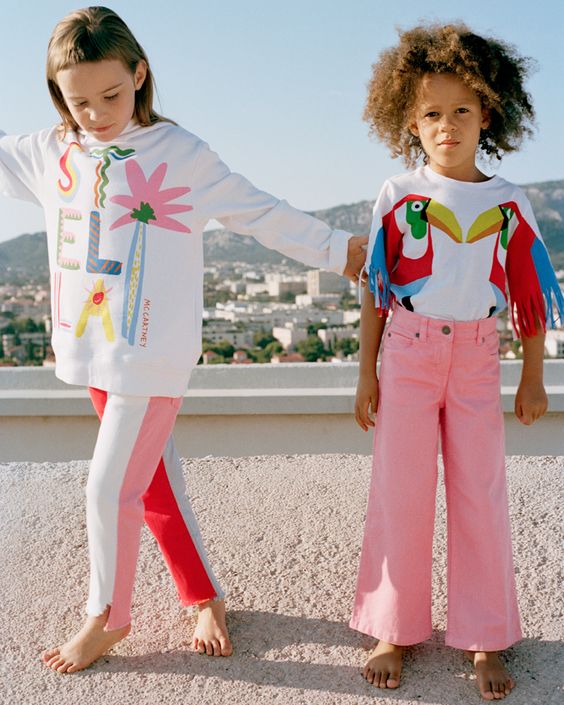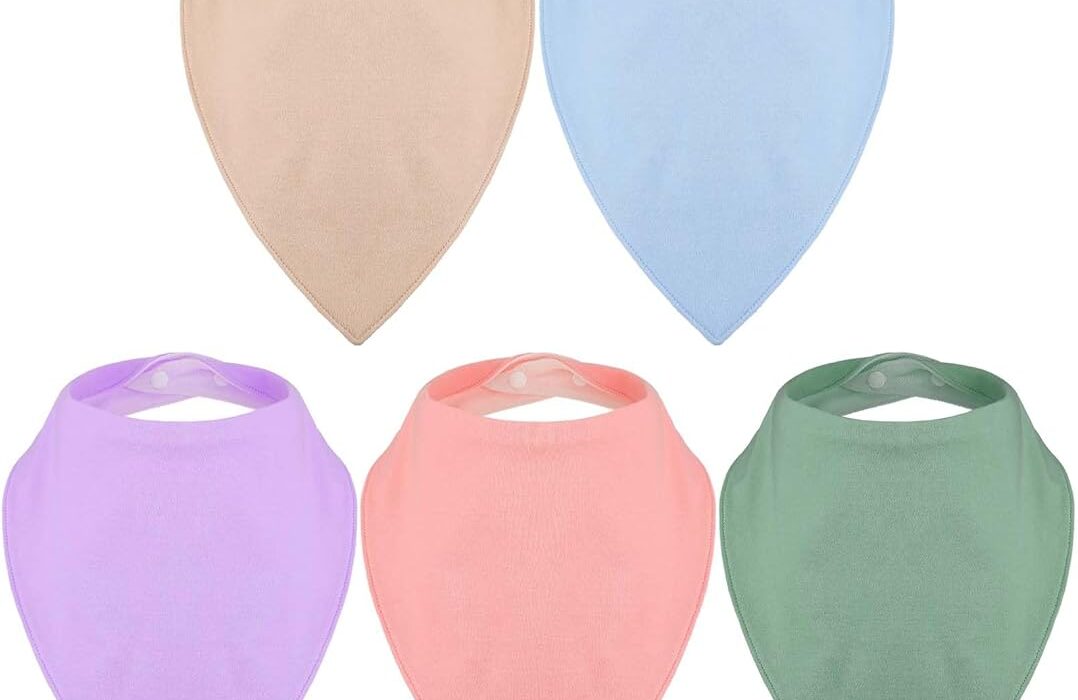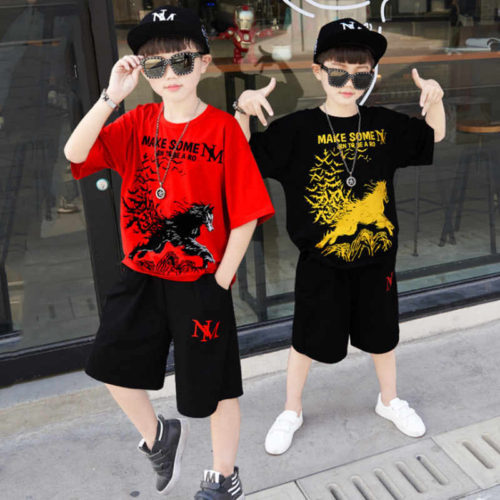Yes, kids’ fashion can support special needs by offering adaptive clothing and sensory-friendly options. These innovations enhance comfort and accessibility for all children.
Fashion plays a crucial role in children’s lives, influencing their self-esteem and social interactions. For children with special needs, clothing can significantly impact their daily experiences. Traditional garments may not always meet their unique requirements, leading to discomfort or frustration.
Adaptive clothing and sensory-friendly materials provide practical solutions. These garments feature designs that accommodate mobility challenges and sensory sensitivities, ensuring a positive experience. The right clothing can empower children, allowing them to express their individuality while feeling comfortable. By focusing on inclusivity, the fashion industry fosters an environment where every child can thrive, regardless of their needs.
Table of Contents

Credit: www.pinterest.com
Introduction To Inclusive Kids Fashion
Inclusive kids fashion is changing the way we think about clothing. It focuses on styles that cater to all children, including those with special needs. This movement promotes acceptance and creativity. Fashion should be fun, comfortable, and accessible for everyone.
The Rise Of Inclusivity
Inclusive fashion is on the rise. Many brands now create clothing for kids with special needs. This change helps break down barriers. Here are some key points:
- More brands are focusing on adaptive clothing.
- Designs consider various disabilities and needs.
- Greater representation in fashion shows and media.
Parents appreciate these changes. They want their children to feel confident. Inclusive fashion offers choices that celebrate diversity.
Why Kids Fashion Matters
Fashion plays a crucial role in a child’s life. It helps express identity and boosts confidence. Here’s why kids’ fashion matters:
- Self-Expression: Clothing reflects personality and style.
- Comfort: Proper fit enhances comfort and mobility.
- Social Inclusion: Everyone deserves to feel included.
- Creativity: Fashion encourages kids to explore their creativity.
Kids with special needs deserve stylish options. Inclusive fashion promotes equality and acceptance. It allows every child to shine.
The Special Needs Spectrum And Fashion
Fashion plays a vital role in self-expression for all children. For kids with special needs, it can offer comfort and confidence. This section explores how fashion can support diverse needs.
Understanding Diverse Needs
Children with special needs have a wide range of requirements. These needs can vary significantly. Here are some common special needs:
- Autism Spectrum Disorder
- Down Syndrome
- Cerebral Palsy
- Sensory Processing Disorder
- ADHD
Each child has unique preferences. Some may need soft fabrics. Others may require easy closures. Understanding these needs helps create suitable fashion options.
Challenges In Current Fashion Trends
Fashion often overlooks the needs of special children. Many challenges arise in this area:
| Challenge | Description |
|---|---|
| Limited Size Options | Most brands do not cater to various body shapes. |
| Inaccessible Designs | Complex designs can be hard for kids to wear. |
| Uncomfortable Materials | Some fabrics can irritate sensitive skin. |
| Lack of Adaptive Clothing | Few brands offer adaptive fashion for special needs. |
Parents often struggle to find suitable clothes. This can lead to frustration for both kids and caregivers.
Creating inclusive fashion is essential. It ensures that all children can express themselves comfortably.
Innovations In Inclusive Clothing
Fashion has evolved to embrace all children. Inclusive clothing focuses on comfort and style. It meets the needs of kids with special requirements. Innovative designs make dressing easier and more enjoyable.
Adaptive Clothing Features
Adaptive clothing offers several unique features. These features make dressing simpler for children with disabilities.
- Easy Closures: Velcro, magnetic buttons, and zippers.
- Adjustable Sizes: Stretchy materials and adjustable waistbands.
- Tagless Designs: Eliminates irritation from tags.
- Flat Seams: Reduces chafing and discomfort.
- Open Back Styles: Makes dressing easier for caregivers.
These features help kids feel comfortable and confident. Parents can find clothing that meets their child’s needs easily.
Technology Meets Fashion
Technology plays a big role in creating inclusive clothing. Designers use innovative methods to enhance functionality.
| Technology | Functionality |
|---|---|
| Smart Fabrics | Regulate temperature and moisture. |
| Wearable Tech | Monitors health and activity levels. |
| 3D Printing | Creates customized fit and designs. |
| Augmented Reality | Helps kids choose outfits virtually. |
These technologies make clothing more functional and fun. Kids can express their style while staying comfortable. Inclusive fashion is not just about looks; it’s about freedom.
Case Studies: Success Stories
Kids’ fashion can empower children with special needs. Many brands are making a difference. Let’s explore some inspiring success stories.
Brands Leading The Way
Several brands focus on inclusive fashion for kids. They create clothes that cater to different needs. Here are some standout examples:
| Brand | Focus Area | Notable Feature |
|---|---|---|
| Mini-Maven | Adaptive Clothing | Easy access for wheelchair users |
| WonderCrew | Diverse Representation | Dolls that reflect different abilities |
| Zappos | Shoe Comfort | Extra wide and adaptive options |
Families’ Experiences
Many families share positive experiences with these brands. Their stories highlight the impact of specialized fashion.
- Emily’s Story: Her son loves his clothes from Mini-Maven. They are comfortable and stylish.
- Jake’s Journey: Jake found friends through WonderCrew dolls. They helped him feel included.
- Sara’s Success: Sara’s daughter wears Zappos shoes. They fit perfectly and allow her to run freely.
These stories show how fashion can change lives. Kids feel more confident and accepted. Families appreciate the thoughtfulness of these brands.
Design Principles For Inclusive Fashion
Inclusive fashion is about creating clothing for everyone. It focuses on the needs of children with special needs. Good design can blend style and comfort. Let’s explore important principles in this area.
Comfort Meets Style
Comfort is key for children with special needs. Clothing should fit well and feel good. Here are some features that can help:
- Soft fabrics like cotton
- No itchy tags or seams
- Stretchable materials for easy movement
Fashion can still be fun. Bright colors and fun patterns make clothing exciting. Styles should appeal to kids, not just parents.
Accessibility In Clothing
Accessibility means making clothing easy to wear. This includes:
- Using larger openings for easy dressing
- Magnetic buttons instead of traditional ones
- Adjustable straps for a better fit
Clothing should be functional and stylish. Designers are using smart ideas to make dressing easier. For example, some clothes have hidden openings for medical devices.
| Feature | Benefits |
|---|---|
| Soft Fabrics | Prevents skin irritation |
| Magnetic Closures | Easy for kids to manage |
| Adjustable Fits | Grows with the child |
Fashion can truly support kids with special needs. The right design principles make a huge difference.

Credit: store.focusonthefamily.com
The Role Of Sensory-friendly Materials
Sensory-friendly materials play a vital role in kids’ fashion. They can help children with sensory processing needs feel comfortable. The right fabrics can make a big difference in daily life. They reduce discomfort and improve confidence.
Choosing The Right Fabrics
Choosing the right fabrics is essential for sensory-friendly clothing. Here are some important options:
- Cotton: Soft and breathable, great for sensitive skin.
- Bamboo: Naturally hypoallergenic and moisture-wicking.
- Modal: Smooth and silky, perfect for delicate skin.
- Fleece: Warm and cozy, ideal for colder days.
- Spandex: Provides stretch and comfort without tightness.
Look for clothing without tags or seams. These features can irritate sensitive skin. Opt for flat seams and tagless designs for extra comfort.
Impact On Sensory Processing Disorders
Many kids experience sensory processing disorders. These children often struggle with certain textures. Sensory-friendly clothing can help in several ways:
| Benefit | Description |
|---|---|
| Comfort | Soft fabrics reduce irritation and discomfort. |
| Confidence | Comfortable clothing boosts self-esteem and independence. |
| Focus | Less distraction leads to better focus in school. |
| Social Interaction | Comfortable kids are more likely to engage with peers. |
Parents should prioritize sensory-friendly options. These choices can lead to happier and more comfortable kids. Investing in the right clothing supports their unique needs.
Empowering Kids Through Fashion Choices
Fashion plays a big role in how kids feel. It can help them express themselves. For kids with special needs, the right clothes can boost their confidence. Fashion choices can be empowering. They allow kids to show who they are.
Building Confidence
Confidence is key for all kids. Fashion can help build that confidence. Here are some ways fashion supports self-esteem:
- Personal Expression: Kids can choose styles they love.
- Positive Feedback: Compliments from peers boost self-worth.
- Comfortable Fabrics: Soft materials help kids feel at ease.
When kids wear clothes they like, they feel good. This can lead to better social interactions.
Promoting Independence
Fashion can also promote independence for kids with special needs. Choosing outfits helps develop decision-making skills. Here are some benefits:
- Choice Empowerment: Kids decide what to wear.
- Learning Skills: Picking clothes teaches organization.
- Adaptive Clothing: Designed for easy dressing and undressing.
Clothes can be both stylish and functional. This allows kids to dress themselves. It enhances their everyday life.
| Benefit | Description |
|---|---|
| Choice Empowerment | Kids enjoy making their own fashion choices. |
| Learning Skills | Picking outfits helps kids learn organization. |
| Adaptive Clothing | Clothes made for easy wearing and removal. |
Challenges In Promoting Inclusive Fashion
Inclusive fashion for kids faces many hurdles. Designers often overlook the unique needs of children with special requirements. This can limit their choices and self-expression.
Understanding these challenges helps create better solutions. Everyone deserves stylish clothing, regardless of their needs.
Overcoming Prejudices
Prejudices about kids with special needs impact fashion choices. Many people assume that inclusive clothing lacks style or quality. This misconception can discourage brands from investing in inclusive lines.
- Stereotypes about disabilities can shape public opinion.
- Fear of judgment may stop parents from exploring options.
- Lack of visibility leads to fewer fashionable choices.
Promoting awareness can change these views. Showcasing diverse models challenges stereotypes. Sharing success stories empowers families to seek stylish options.
Economic Considerations
Creating inclusive fashion often involves higher costs. Many brands struggle to balance quality and affordability. This can limit availability for families.
| Cost Factors | Impact on Families |
|---|---|
| Specialized materials | Higher prices for limited selections |
| Small production runs | Increased cost per item |
| Design expertise | Limited brands can charge more |
Brands need to find ways to lower costs. Partnerships with nonprofits or community programs can help. This ensures kids receive fashionable clothing without financial strain.
Community And Support Systems
Community and support systems play a vital role in kids’ fashion for special needs. They create a safe space for families. These networks offer resources, advice, and encouragement. Parents find strength in shared experiences. Children feel less isolated in their journey.
Fostering Inclusivity
Fostering inclusivity in kids’ fashion is crucial. Brands must consider all children, including those with special needs. This means designing clothes that are both stylish and functional.
- Adaptive clothing options
- Comfortable materials
- Easy closures for independent dressing
Local communities can play a major role. They can organize events that celebrate diversity. Schools can host fashion shows featuring adaptive clothing. This helps all children feel valued and included.
Role Of Social Media
Social media transforms how families connect. Online platforms share ideas and resources. Parents find inspiration through stories and photos. This helps them choose the right clothing for their kids.
| Platform | Benefits |
|---|---|
| Visual inspiration and community connections | |
| Support groups and resources sharing | |
| Ideas for adaptive fashion styles |
Hashtags like #AdaptiveFashion and #InclusiveKidsFashion unite voices. These tags promote awareness and acceptance. They help families find brands that embrace diversity.
Regulations And Standards For Inclusive Fashion
Inclusive fashion for children with special needs requires clear regulations and standards. These guidelines ensure that clothing is accessible, comfortable, and stylish. They help brands create products that cater to diverse needs. Understanding the framework is crucial for parents and designers.
Government Role
Governments play a vital role in promoting inclusive fashion. They set regulations that brands must follow. Here are key responsibilities:
- Developing policies that support accessibility.
- Funding initiatives for inclusive design.
- Encouraging collaboration between brands and special needs organizations.
Government regulations often focus on:
- Safety standards for children’s clothing.
- Labeling requirements for special features.
- Providing grants for inclusive fashion projects.
Industry Guidelines
Industry guidelines help brands create inclusive fashion. These guidelines focus on several areas:
| Guideline Area | Description |
|---|---|
| Fit and Comfort | Design clothing that accommodates various body types. |
| Accessibility | Ensure easy dressing and undressing for kids. |
| Durability | Use materials that withstand wear and tear. |
Brands should also consider:
- Using sensory-friendly fabrics.
- Offering adjustable features for better fit.
- Involving families in the design process.
Following these guidelines fosters a more inclusive fashion environment.
Future Trends In Kids Fashion
The future of kids’ fashion is bright and diverse. Designers aim to create clothing that is stylish and functional. This trend supports children with special needs too. Fashion is becoming inclusive, making every child feel valued.
Predicting The Next Big Thing
What will shape kids’ fashion in the coming years? Here are some key predictions:
- Smart Clothing: Tech-infused garments will monitor health.
- Adaptive Designs: Clothes that adjust to fit various needs.
- Interactive Fashion: Outfits that change colors or patterns.
- Customization: Kids will design their own outfits.
These innovations will empower children. They will express their personalities through fashion.
Sustainability And Ethics
Parents care about the environment. Sustainable fashion is gaining traction. Here’s why it matters:
| Aspect | Importance |
|---|---|
| Eco-friendly Materials | Reduce environmental impact and promote health. |
| Ethical Production | Supports fair wages and safe working conditions. |
| Recycling Programs | Encourages reusing clothes, reducing waste. |
Fashion brands will focus on these values. Parents will support brands that align with their ethics.
Future trends in kids’ fashion are exciting. They promise to create a more inclusive and sustainable world.
How To Get Involved
Getting involved in kids’ fashion for special needs is important. You can make a difference. Support brands that care. Raise awareness and advocate for better options. Here are some ways to get started.
Supporting Brands
Choose to buy from brands focused on special needs. Look for clothing that is:
- Adaptive
- Comfortable
- Stylish
Some brands to consider include:
| Brand Name | Specialty |
|---|---|
| Mini-Melissa | Footwear for sensory issues |
| Frog & Co. | Adaptive clothing for all |
| WonderCrew | Dolls that promote inclusion |
By choosing these brands, you help promote better options. Share your finds on social media. Use hashtags to spread the word.
Advocacy And Awareness
Speak up for kids with special needs. Join local groups or online communities. Share your experiences and ideas. Here’s how to advocate effectively:
- Attend events that support special needs fashion.
- Educate others about the importance of inclusive clothing.
- Collaborate with schools to raise awareness.
Use social media to highlight stories. Post about challenges and successes. Encourage others to join the movement. Every voice counts in creating change.
Conclusion: The Path Forward
Fashion for kids with special needs is crucial. It empowers them to express themselves. Understanding this leads to better choices in clothing.
Summarizing Key Takeaways
- Comfort is essential in clothing for special needs children.
- Adaptive features enhance functionality and style.
- Inclusivity in fashion fosters self-esteem.
- Collaboration with designers improves options available.
- Awareness among parents and brands drives change.
Call To Action
Support brands that focus on adaptive fashion. Share your thoughts and experiences. Create awareness in your community. Together, we can improve fashion for all children.
Join online forums or groups focused on this topic. Your voice matters. Advocate for better clothing options today!

Credit: www.amazon.com
Frequently Asked Questions
Can Fashion Help Children With Special Needs?
Fashion can enhance comfort and confidence for children with special needs, promoting self-expression and individuality.
What Materials Are Best For Special Needs Clothing?
Soft, breathable, and stretchy fabrics are ideal. They ensure comfort and ease of movement for active kids.
How Can Adaptive Clothing Benefit Kids?
Adaptive clothing features easy closures and adjustable elements, making dressing simpler for children with physical challenges.
Are There Brands Focused On Special Needs Fashion?
Yes, several brands specialize in inclusive fashion, providing stylish options tailored for children with special needs.
Conclusion
Kids’ fashion can play a significant role in supporting special needs. Thoughtful designs enhance comfort and confidence. By prioritizing inclusivity and functionality, brands can cater to diverse requirements. Parents can find stylish options that empower their children. Embracing this approach makes a positive impact on both kids and their families.







